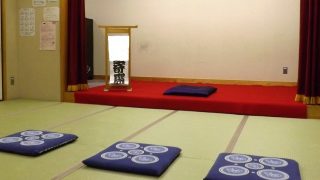About Kodo, the art of incense burning (香道)
Kodo is, literally, the art of incense burning and enjoying fragrance. We burn incense wood to make incense and appreciate the incense. Incense is said not for “sniffing” but for “listening.”
In Kodo, there are two general ways to enjoy incense: “Monko,” in which one listens and appreciates the fragrance, and “Kumiko,” in which one listens and identifies the scent of incense.
The beginning of Kodo, the art of incense burning
Incense wood was introduced from India and China, along with Buddhism. It is said that in the Nara period, incense was widely burned in temples. Eventually, the fragrance was loved, and incense was burned in the court.
During the Heian period, incense became popular among the aristocracy after they left Buddhism. Since Incense wood was not available in Japan, it was prized as a high-class gift.
In the Kamakura period (1185-1333), the method of making incense was created as an art form.
In the Muromachi period (1336-1573), the enjoyment of incense and Zen teachings were added, and a culture similar to today’s Kodo was established.
During the Muromachi and Edo periods, attempts were made to classify incense woods. It is a classification system of incense wood, “Rikkokugomi (六国五味)”.
It was named “Kyara”(伽羅), “Rakoku”(羅国), “Manaka”(真那伽), “Manaban”(真南蛮), “Sasora”(佐曾羅) and “Sumotara”(寸聞多羅) according to the region of origin. Also, “five flavors”(五味) were what we were trying to describe by replacing them with flavors such as spicy, sweet, sour, bitter, and salty. Thanks to the ability to categorize to some extent, the Kodo has evolved further.
In the Edo period, incense spread among samurai families and ordinary people and women, and Kodo came to be counted as a form of education.
Even today, “incense burning classes” are still held, and people love them as a hobby or a lesson.
Kodo Tools, incense burning tools
Some of the tools used for Kodo are listed below.
Incense wood

An Incense wood is called a “Koboku”(香木).
Incense wood is not a tree that grows but a wood that has been decayed and matured by rain or insects and, as a result, has come to release a good fragrance.
Incense burner called Koro (香炉)

This tool is used to heat incense wood to release its fragrance.
It is not just a tool; the incense burner itself is also treated as a work of art.
Fire tools called Hidogu (火道具)

There is a Kosaji for placing incense wood on the censer, a Haiosae for shaping the ashes of the incense burner into a beautiful pile, and a Habouki for cleaning the ashes.
Although the tools and manners are set in detail, the basic idea of Kodo is to “burn incense wood and enjoy its fragrance.”
How to enjoy Kodo
There are many ways to enjoy Kodo, but the main ones are “Monko” and “Kumiko.”
Monko (聞香)
It is the simplest way to enjoy incense burning and appreciating the fragrance. The technique is similar to that of the tea ceremony.
Place the incense burner on your left hand and cover the top of the incense burner with your right hand to listen to the fragrance.
After quietly breathing in the incense burning, bow and pass the incense burner to the person next to you.
Kumiko (組香)
The game of listening and identifying to the incense is called Kumiko.
Prepare several kinds of incense wood, divide them into small pieces, and wrap them in incense packages.
Without knowing which incense was which, they burned one at a time, and the participants thought about the type of incense while turning the incense burner.
Once you have written your answers on a piece of paper in your hand and turned them in, we will match your answers. Your grade is determined by the number of correct answers. Some Kumiko are based on seasons, places of interest, or literature.
It’s a game that also tests your cultural education.













